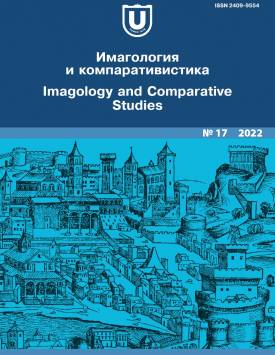Christian Monasteries of the East of the 6th-7th Centuries in the “Sacred Space” of The Ladder of Divine Ascent by John Climacus
The article studies the translation of The Ladder of Divine Ascent by John Climacus with the aim to name historical evidence and facts about the life in Eastern monasticism of the 6th-7th centuries, described in this work of literature. The author uses the term “sacred space” to define the residences of Egyptian monks described by John Climacus. In total, The Ladder names four Christian monasteries (St. Catherine’s Monastery of Sinai, the Raifa Monastery, the Lavra of St. Savva the Sanctified, and the Tavennisi Monastery), Scetis, five places of monastic seclusion near St. Catherine’s Monastery of Sinai (Fola, Siddin, Arsilaia, and two unnamed places: the residence of St. Stephen on Mount Sinai and the residence of Isychii on Mount Khoriv). The names of three monasteries included in the “sacred space” are not given, though The Ladder contains vivid pictures of the life there. These are: 1) a monastery in Asia, where St. Acacius of Sinai lived; 2) a monastery in Pontus, where St. John the Silent lived; 3) a monastery near Alexandria, which plays the key role in the “sacred space” of The Ladder. This monastery owned a lavra and a metochion, used a prison. The name of the hegumen of this monastery is also unknown, though The Ladder presents him as an ideal collective vision of a senior priest: a sheperd, father, teacher, judge, doctor, helmsman, and artist. The symbolic key to understanding The Ladder is the Parable about the Good Shepherd and the Mercenary. The traits of a “good shepherd” The Ladder are epitomized by an anonymous hegumen of an anonymous monastery. Concealing the name of the hegumen, John Climacus names the monks who lived in this monastery (Isidore, Lawrence, Avvakir, Macedonian, Mina). In total, there were 330 monks, besides those were in the lavra or metochion. John Climacus privides a vibrant description of the life in this monastery, which he observed for two month, paying special attention to the description of the monastery prison. The monks voluntarily doom themselves to suffering in the prison, with their torments making the deepest impression on the medieval reader. These images can be found in various types of fine arts, in Byzantine hymnography and in other literary monuments, for example, in the “Testament” of the Kiev Metropolitan Constantine I, who ordered not to bury his body after death, but to drag it out to the wasteland and leave it to be torn apart by the street dogs. The question remains why the name of a huge monastery near Alexandria, whose hegumen enjoyed undoubted spiritual authority, has not been mentioned in The Ladder. Probably, the monastery was the spiritual center of Monothelitism, so that it was cursed and deleted from all sources, including The Ladder. The author declares no conflicts of interests.
Keywords
The Ladder of Divine Ascent by John Climacus, History of Eastern Monasticism, Toponymy of Medieval EgyptAuthors
| Name | Organization | |
| Popova Tatiana G. | Immanuel Kant Baltic Federal University | lestvic@mail.ru |
References

Christian Monasteries of the East of the 6th-7th Centuries in the “Sacred Space” of The Ladder of Divine Ascent by John Climacus | Imagologiya i komparativistika – Imagology and Comparative Studies. 2022. № 17. DOI: 10.17223/24099554/17/7
